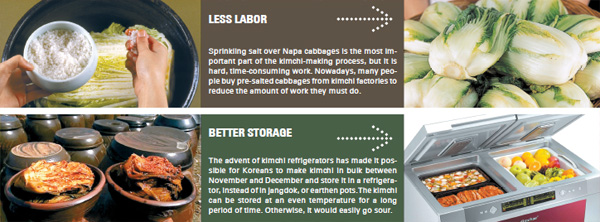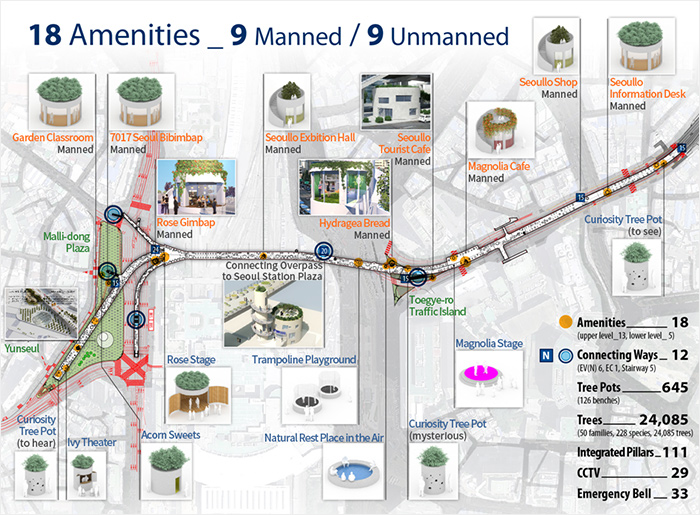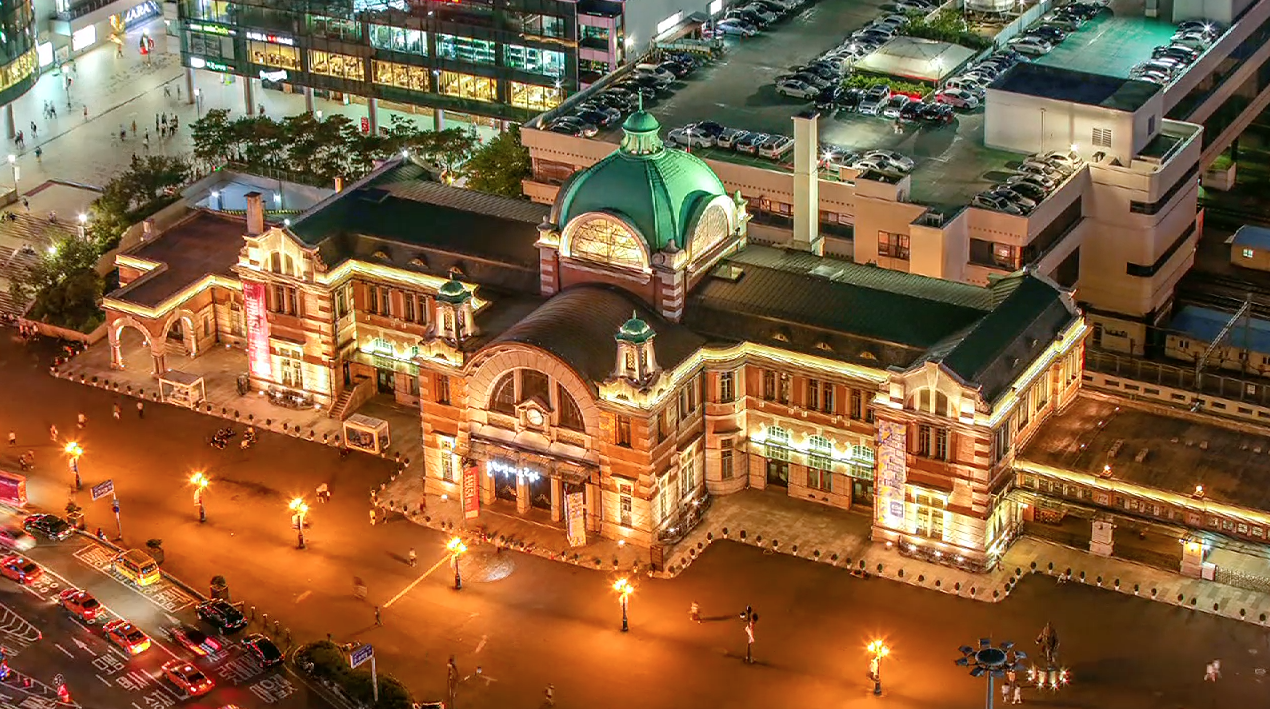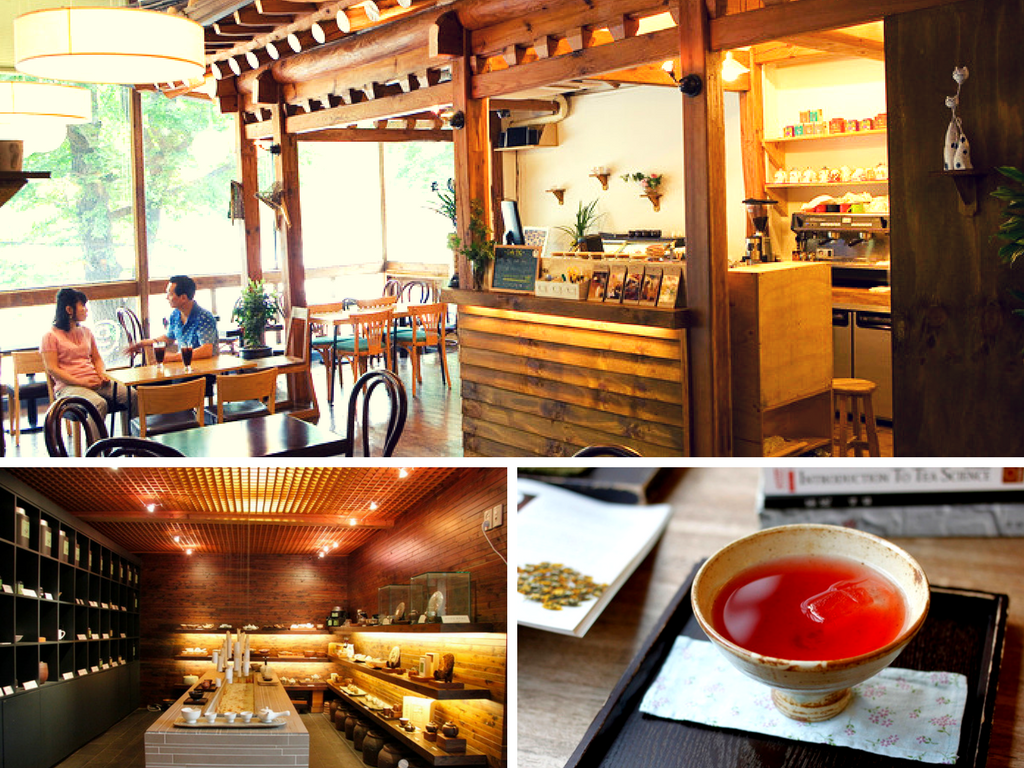
Day Tripper Around Seoul: Insadong + Seoullo 7017 at Seoul Station!
While Seoul is avidly associated with the Kpop culture, it is a city that offers way more than that. Today at KoreaTravelEasy, we celebrate South Korea’s vibrant culture with a heritage focused day-tour in Seoul, exploring the perfect blend of old and new.
TODAY’S COURSE
Kimchi Museum@Insadong + Seoullo 7017@Seoul Station
Kimchi – South Korea’s Beloved Staple Food
Unequivocally one of the most representative staple food in Korean cuisine, Koreans’ love and dedication for kimchi dated as far back as the 7th century. During cold winters where there were difficulties in cultivating of fresh vegetables, preserving vegetable by pickling developed naturally as an alternative storage method and there’s no looking back since then!

Photo Credit: Korea Tourism Organization
Today, Kimchi is not only eaten as a side dish, it is also a main ingredient in an assorted dishes including kimchi-jjigae, kimchi-jeon, kimchi fried rice and more.
Kimchi’s Varieties: Not All of Them Are Hot & Spicy!
While we typically picture Kimchi as a red, spicy fermented vegetable, there are actually more than 100 variations and the taste of Kimchi diversified depending on the region and season.
For example, kimchi from southern regions such as Jeolla-do & Gyeongsang-do, tend to be spicier and saltier and it’s the opposite for kimchi from the northern regions such as Gangwon-do & Chungcheong-do.


Photo Credit: Visit Korea
Health Benefits of Kimchi
Loaded with vitamins and tones of healthy bacteria, Kimchi was listed as one of the world’s five healthiest foods in 2006. So what are some of the health benefits you would get when you make Kimchi a staple of your diet?

Photo Credit: Korea Tourism Organization
- Improves Digestive System & Immunity
Particularly relevant in today’s stressful environment, research has shown that by eating Kimchi, it helps to replenish the lactobacilli count which helps us to digest the food we eat and fight off common food borne pathogens in our digestive tracts at the same time.
- Reduce Food Cravings
Rich in fiber and probiotics, eating kimchi will helps to make you feel fuller quicker and the probiotics in kimchi assist in weight reduction by stopping sugar addiction. In other words, Kimchi, which is also low in calorie can be your best friend especially when you’re on a diet!
- Slows Down Ageing Process
Yes, you have heard us right! Researchers have speculated that the antioxidant properties of the ingredients used in making Kimchi are responsible to this seemingly fountain-of-youth that all Koreans have.
And the list just goes on and on!
?? MUST TRY ACTIVITY: MAKE YOUR OWN KIMCHI!

A visit to Seoul is not complete without experiencing the process of kimchi-making for yourself!
The program is catered for all ages and is a fun-filled activity suitable for a whole family to share! Throughout the program, you will be led by an expert who will take you through process step-by-step and are held in either English or Chinese. What’s more, by the end of the program, you get to take home that Kimchi that you have made!
But Where Can I Go For This Special Experience?
While there are several options when it comes to finding out more about Korea’s iconic Kimchi, we recommend you take a trip down to Insadong and here’s why!
- Home to the pioneer of food museum in South Korea
It’s where you can find the only food museum that is chosen by CNN as one of the top 11 food museums in the world!
- Seoul’s Crossroad of Past and Present
From traditional Korean arts and crafts to fine art, your cravings for Korean cuisine can also be satisfied easily with a wide range of options, from street food to cafes and specialized restaurants offering traditional Korean meals.
- A Wide Variety of Street Food
Fish cake, spicy rice cake, hotteok, steamed egg bun… just check out the photos below!

Photo Credit: ©Photographer (Kim Jiho)-Korea Tourism Organization
? A Look at Past & Present
Kimchi Fermentation Storage: Kimchi Refrigerator vs Kimchi Jar
One of the key factors in making tasty kimchi is by ensuring that kimchi is being fermented at an optimal temperature, as such the vessels to store kimchi after preparation become vitally important. While Korean families today are assisted by specially designed ‘Kimchi Refrigerator’, in older days, kimchi is stored in jars and then preserved by burying the jar almost entirely underground.

Photo Credit: Korea Joongang Daily
While kimchi can be easily purchased in supermarkets, it is interesting to note that the practice of kimjang is still widely practiced (some say old way is still the best way!) and it is not uncommon to find kimchi jars in Korean household!
Seoullo 7017 at Seoul Station

Photo Credit: Visit Seoul Net
Officially opened on May 20th 2017, Seoullo 7017 is the latest addition to the city’s landmark and a unique tourist attraction conveniently located at Seoul Station. It all started with a negative safety assessment of the overpass in 2006, but instead of demolishing this symbolic infrastructure, a decision was made to preserve and turn what used to be ‘a road for cars’ to ‘a road for people’.
Why Is It Named “Seoullo 7017”?
Literally translates to “Seoul’s road”, the “70” in the name refers to the year 1970 when highway was first constructed. “17” is a reference to the year 2017, when its transformation into an elevated public park was completed. It also features 17 pedestrian walkways and each walkway provide easy access to different parts of Seoul.
Amenities & Facilities of Seoullo 7017

Photo Credit: Seoullo 7017
Also known as the ‘Sky Garden Within the City’, this transformed pedestrian overpass is 1,024 meters long, walking from one end to another takes about 20 minutes. There are a total of 18 amenities and features about 215 types of plants in 50 families, totalling up to 23,195 trees.
From retro Korean dessert café, traditional Koreans snacks and sweet buns, to mini gimbap and healthy bibimbap – you will have a wide selection of choices to recharge before continuing your journey! Some other places to see at Seoullo 7017 include:

Photo Credit: Seoul Metropolitan Government
Where Is This & How Do I Get There?

Photo Credit: Seoullo 7017
As shown in the image above, there are 17 main entry points to this overpass walkway. However, we recommend option 9 where you will be able to enter from Seoul Station Square. To get there, simply travel to Seoul Station (line 1 or 4) and look for exit number 8.
Promotional Video of Seoullo 7017
Taken From Visit Seoul Net
?? MUST-SEE & MUST-DO: FUN EXPLORATIONS IN BITE-SIZE!
- Participate in one of the scheduled festivals and events at Seoullo 7017!
![[Seoullo 7017 Major Festivals and Events]](https://cdn.koreatraveleasy.com/wp-content/uploads/2017/06/09105319/Seoullo-7017-Major-Festivals-and-Events-.jpg)
Schedule Credit: Seoul Metropolitan Government
- Sign up for the themed, guided walking tours organised to explore the beauty of Seoul!
- Visit Culture Station Seoul 284 (reconstructed space from the building of old Seoul Station, sitting right next to Seoullo 7017) and embarks on a time-themed cultural journey, with programs ranging from exhibitions, performing arts to free movie screening from now until July 23rd.

Photo Credit: Culture Seoul Station 284
? A Look at Past & Present
Coffee Drinking Culture in Korea: Dabang vs Coffee Shop
Whether it is walking down the bustling Seoul station or the crossroads of modern and traditional, Insadong, it will not be difficult to get yourself a cup of coffee from brands that you’re familiar with or local chains that set its presence in almost every corner of Seoul. Interestingly enough, the boom of coffee drinking in Korea can be dated back to 1902, over 100 years ago.

Photo Credit: Visit Korea
In early days….
- Coffee shops are called ‘dabang’, which literally means tea house and was only available for royalties or people in high societal status.
- It was a meeting place for formal affairs rather than a casual venue for people to enjoy social interactions.
- The popularity of ‘dabang’ continues to soar until 1999, when Starbucks opened its first store in South Korea.
As of 2015, it is estimated that there are at least 49,600 coffee shops in South Korea. While more foreign chains have established itself in South Korea, it is still possible to find traditional ‘dabang’ especially in Insadong area.
So, if you’re looking for a look back at olden days of Seoul, it’s definitely a scene that you would have to visit!






 KoreaTravelEasy
KoreaTravelEasy